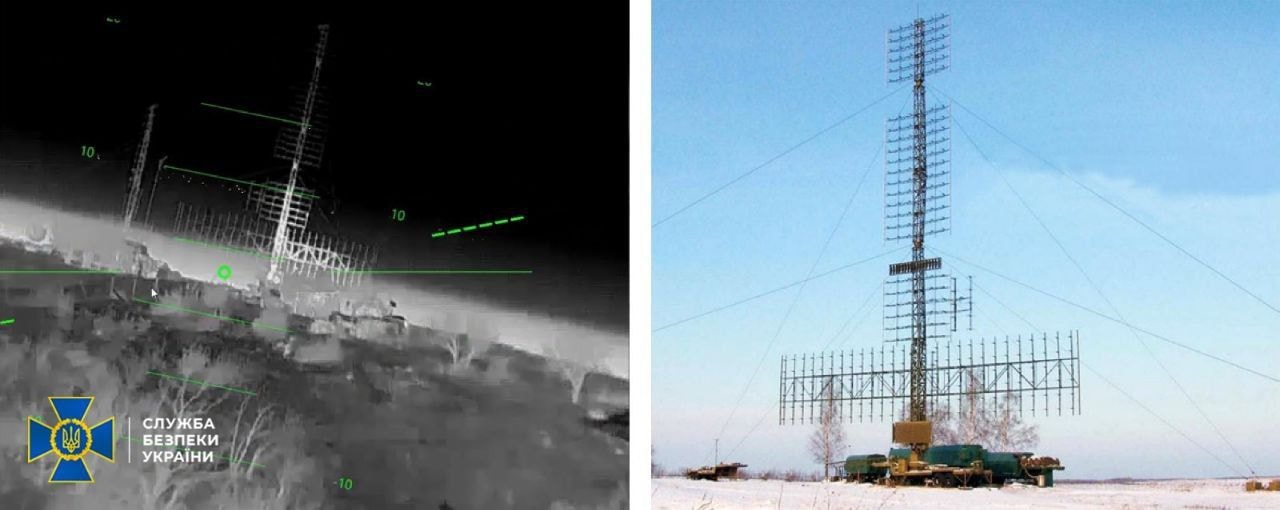
Ukraine's F-16 have a new trick to avoid Russian ballistic missiles
F-16 plane with a mobile support unit in an undisclosed location, Ukraine. (Come Back Alive charity foundation)
Ukraine's fleet of F-16 fighter jets have been given a badly-needed boost with the creation of new mobile maintenance and operations modules which will help them evade Russian ballistic missile strikes.
Developed by the Come Back Alive charity foundation and Ukraine's Defense Ministry, the two types of mobile modules contain everything needed to both maintain and equip the aircraft and to conduct operations.
F-16 fighter jets are crucial for Ukraine as they significantly strengthen its air defense and help counter ongoing Russian drone and missile attacks, which target both Ukrainian cities and military objects such as the airfields where F-16s are stationed.
"There is only a short time lag between finding the F-16s and then launching ballistic missiles," Peter Layton, former Royal Australian Air Force officer and Associate Fellow at RUSI, told the Kyiv Independent.
"The key to F-16 survival when on the ground is not being found," he added.
The extensive amount of crew and equipment needed to maintain F-16s has up until now limited where they could be deployed, but Layton said the new mobile complexes would open up the use of "less likely airfields, such as short and civilian air strips, or remote parts of large military airbases."
"The F-16s are then widely dispersed so if one is found and targeted not all will be destroyed. It is a shell game," he added.
The F-16 mobile complexes
The new mobile complexes include two maintenance modules and another for mission planning.
The first are equipped with a workroom for preparing the aircraft's weaponry, two vans for attaching munitions to the F-16, and a crew transportation truck.

The new system reduces the number of personnel needed to load a munition from 10–12 to three, making the process less manpower-intensive and faster.
The second includes a mobile command point used for pre-flight briefings and aircraft coordination, and a residential module for operators.
Taras Chmut, head of Come Back Alive foundation, said this project aims to adapt the Western-supplied F-16s to the reality of the war in Ukraine..
"The aircraft received by Ukraine (were used in the donor countries) in a closed ecosystem. They were not used the way we use them. Ours operate under the conditions of a full-scale war, with constant sorties and continuous Russian hunting," Chmut said.
Similar systems also exist in other countries, for instance, in the U.S., Australia, Sweden.
"This (agile combat employment) is a tactic that has received a lot of attention in the Indo-Pacific in the last few years. Countries are worried that in the event of a war, China could target their air forces operating from their peacetime airbases," Layton said.
"The Americans have put a lot of effort into training how to fly their fighters from remote island airfields, termed agile air operations," he added.
However, Anastasiia Yurchyshyna, spokesperson for Come Back Alive, told the Kyiv Independent that the Ukrainian system is unique, although it has adopted the experience of its foreign partners, particularly Denmark.
"When our colleagues began to develop and looked at Western examples, they realized that there was nothing they needed. In countries where there is no war, airfields are usually used," Yurchyshyna said.
"This is the first time in history that we have created such a development. It took several iterations of development."

How many F-16s does Ukraine have?
In 2023, Ukraine and its allies created an aviation coalition to provide Ukraine with F-16 combat aircraft. European nations have agreed to supply aircraft to help modernize the Ukrainian Air Force as they themselves transition to more advanced F-35 fighter jets.
The first shipments of F-16s were delivered to Ukraine in 2024 by the Netherlands and Denmark.
Apart from the Dutch aircraft, Ukraine has been promised 19 F-16s by Denmark, 30 by Belgium, and at least six from Norway. European nations have agreed to supply aircraft to help modernize the Ukrainian Air Force as they themselves transition to more advanced F-35 fighter jets.
Oslo announced in May that it would complete the delivery of its planes by the end of 2025. Similarly, the Belgian government said it would provide its aircraft sooner than the 2028 deadline.

Other members of the coalition, including the U.S. and the U.K., have provided training for Ukrainian pilots and maintenance personnel.
Ukraine has confirmed that it has lost three of its F-16 jets in action.
"Ukraine is receiving an increasing number of F-16s. The dispersal tactic will keep these safe and allow a larger F-16 force to be built up. While the aircraft are dispersed on the ground, after take-off the aircraft can come together in the air and fight as a concentrated formation," Layton said.
"With the length of the war unsure, keeping the F-16 fleet safe for the longer term is important."









